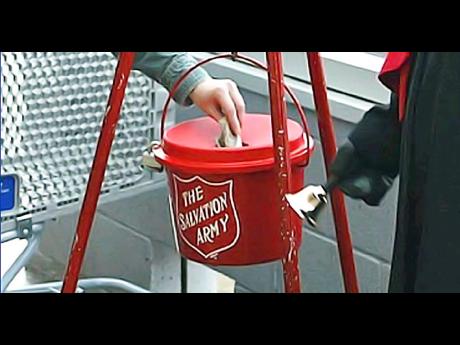The story of the Salvation Army Part III Leadership structure and outreach
The Salvation Army, founded in 1865 in London, England, by William Booth is an evangelical branch of the universal Christian Church. From the very beginning, its thrust is to attend to the spiritual, evangelical, and material needs of people.
Over the years, it has helped millions of people through its wide array of social services that range from providing food for the hungry, relief for disaster victims, assistance for the disabled, outreach to the elderly and the sick, clothing and shelter to the homeless, and opportunities for underprivileged children. Part of its mission is "to preach the gospel of Jesus Christ and to meet human needs in His name without discrimination".
Fundraising Campaigns
Its fundraising campaigns are conducted on a local and regional scale, as there is no fundraising at the national level. The normal sources of funds are the traditional Christmas kettle campaigns, direct-mail programmes, corporate and foundation gifts, planned giving, and government contracts.
The operations and co-ordinations of these outreach efforts are done through a clearly defined hierarchy of leadership, stratified from top to bottom with ranks similar to the military. And because it is a "spiritual warfare" that drives it, The Salvation Army uses other military features such as uniforms and flags "to identify, inspire and regulate its endeavours". All positions, except that of general, are acquired by appointment.
The general, headquartered in London, is the international leader of The Salvation Army. He/she is elected from among the most senior Salvation Army officers in the world by a group known as the High Council, made up of Salvation Army commissioners. They are summoned together for this election. The general directs Salvation Army operations in more than 110 countries through the administrative departments of its International Headquarters in London, headed by international secretaries.
National Commanders
National commanders oversee the Salvation Army operations for each country. They supervise territorial commanders, who are based at Territorial Headquarters, where they are assisted by a chief secretary and various other secretaries (departmental heads) responsible for overseeing the various branches of Salvation Army activities. Each territory has divisions, which are run by divisional commanders, answerable to their territorial commanders.
A division is a group of districts, consisting of a number of corps/citadel and programmes, which are mostly run by officers of different ranks. A corps/citadel is The Salvation Army equivalent of a church. It is led by a corps/citadel officer, who is responsible to the divisional commander. The functions of the corps/citadel include religious and social services, which are adapted to local needs.
Officers are the clergy of The Salvation Army. They have either completed training as cadets or auxiliary captains and have been ordained and commissioned to office. All officers are continually trained.
The lower level of the hierarchy consists of soldiers, adherents, employees and volunteers. Soldiers are those who have signed a declaration of faith and practise known as A Soldier's Covenant and worship and serve through a local corps. Adherents have been elected to regard The Salvation Army as their place of worship.
Employees are hired to perform specialised duties in areas such as social services, youth service, accounting, development, law, etc., while volunteers are those who give freely of their time in assisting The Salvation Army in attending to the needs of communities. Apart from the individual rankings, there are the Commissioners' Conference, standing commissions and advisory organisations.

